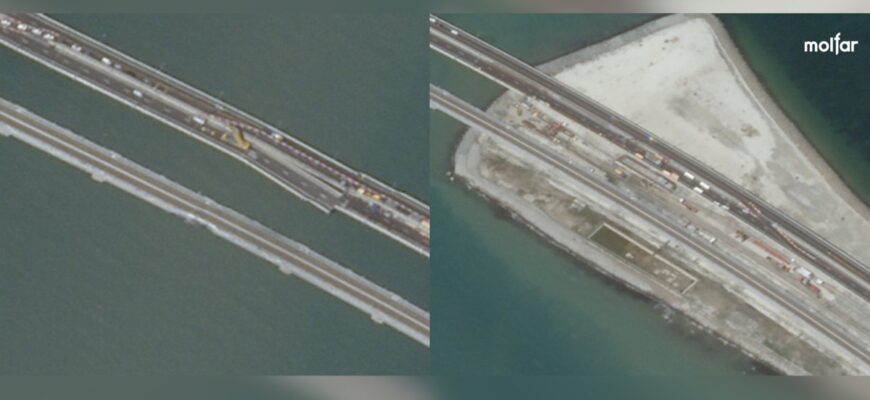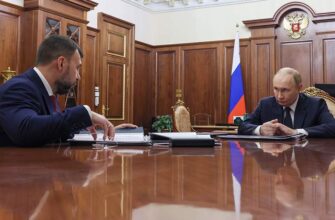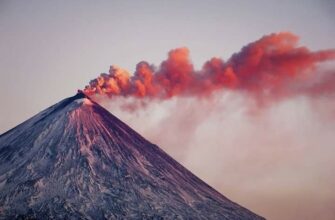The summer travel season has once again brought the Crimean Bridge to a standstill, but this time, the scale of the gridlock has reached unprecedented levels. A staggering 35-kilometer queue of vehicles stretching back from the Taman side has turned what should be a journey to leisure into an arduous test of patience, endurance, and basic human needs. Travelers, many with families and young children, find themselves ensnared in a sweltering open-air waiting room, battling extreme heat and a severe lack of essential facilities.
The Anatomy of a Record Jam
This record-breaking congestion, a significant increase from the previous day`s 30 kilometers, translates to estimated waiting times exceeding six hours for those attempting to cross into Crimea. While the queue saw a slight reduction to 1,260 vehicles and a four-hour wait by evening, the situation remains a logistical nightmare for thousands. Reports from the ground paint a vivid picture of distress, with complaints echoing from the sun-baked asphalt: stifling heat, no access to restrooms, and an acute scarcity of water along vast stretches of the queue.
A local taxi driver, operating in the vicinity, aptly described the scene as “a crazy record.” He highlighted the unprepared rural areas where vehicles queue, far from basic amenities, emphasizing the dire lack of toilets as “the most regrettable thing.”
Navigating Human Factors and Infrastructure Gaps
Experts and travelers alike point to a confluence of factors exacerbating the traffic situation. Alexander Gorny, a Crimean journalist, highlighted the systemic issues at play. He confirmed that “the security checkpoints, particularly on the Taman side, are simply not equipped to handle such immense tourist traffic.”
“I must admit from my personal experience that the operator`s work on the Crimean side was much better organized when I crossed the Crimean Bridge than on the Taman side. In recent weeks, there has been enormous tourist traffic, which the posts are simply not physically designed for.”
Gorny also pointed to the “human factor,” suggesting that many travelers inadvertently prolong delays by failing to follow recommendations for efficient vehicle inspections. “People just throw their belongings into their cars,” he explained, “making quick manual scans impossible, whereas compact packing would allow for swift processing through hand scanners.”
Adding to the frustration, a resident from Kerch recounted her four-hour ordeal with children in tow, emphasizing the stark difference in efficiency between the two sides. “The Crimean side always seems to process people faster,” she observed, expressing dismay over the new, supposedly optimized, inspection system that paradoxically creates more bottlenecks by intertwining different vehicle flows.
The Bypass Gambit: A Futile Attempt at Efficiency
In a classic display of human ingenuity meeting regulatory force, desperate motorists attempted to bypass the main queue through the village of Taman, leveraging navigation apps to find supposed shortcuts. However, their navigational shortcuts were quickly thwarted by traffic police, who have since restricted access to the A-290 federal highway, ensuring all vehicles face the same, albeit long, democratic wait. This serves as a stark reminder that even in an age of instant gratification and sophisticated digital navigation, some obstacles remain stubbornly analogue and subject to traditional enforcement.
While alternative routes through “new territories” offer some relief, even these are not immune to minor traffic buildups, primarily due to heavy vehicle traffic and thorough inspections.
The Unseen Costs and Looming Outlook
Beyond the mere inconvenience, the prolonged waits in extreme conditions pose significant health and safety risks, especially for families with infants. The lack of proper sanitation facilities forces people to seek privacy in open fields, raising concerns about potential hazards. Furthermore, mobile communication, a lifeline for many, reportedly experiences intermittent disruptions in the area, adding to the sense of isolation and uncertainty.
Note: This scenario, while focused on a travel bottleneck, subtly mirrors broader societal discussions about preparedness, public conduct under duress, and the evolving legal landscape concerning public information during critical events, where even documenting a unique situation can inadvertently lead to unforeseen consequences.
As forecasts predict sustained high traffic volumes until at least August 5th, authorities continue to advise travelers to prepare for extensive delays, urging them to stock up on water and fuel. For now, the Crimean Bridge stands not just as a vital link, but as a monument to summer`s unpredictable realities and the sometimes-uncomfortable intersection of leisure, logistics, and national security.








